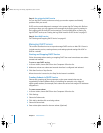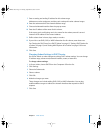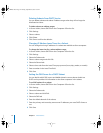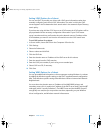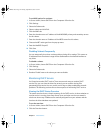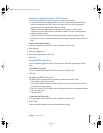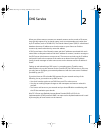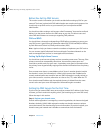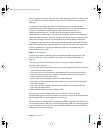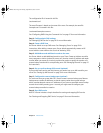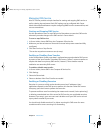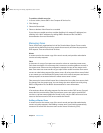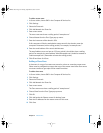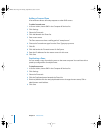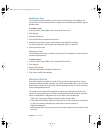
18 Chapter 2 DNS Service
Before You Set Up DNS Service
This section contains information you should consider before setting up DNS on your
network. The issues involved with DNS administration are complex and numerous. You
should only set up DNS service on your network if you’re an experienced DNS
administrator.
You should consider creating a mail account called “hostmaster” that receives mail and
delivers it to the person that runs the DNS server at your site. This allows users and
other DNS administrators to contact you regarding DNS problems.
DNS and BIND
You should have a thorough understanding of DNS before you attempt to set up your
own DNS server. A good source of information about DNS is DNS and BIND, 4th edition,
by Paul Albitz and Cricket Liu (O’Reilly and Associates, 2001).
Note: Apple can help you locate a network consultant to implement your DNS service.
You can contact Apple Professional Services and Apple Consultants Network on the
web at www.apple.com/services/ or www.apple.com/consultants.
Setting Up Multiple Name Servers
You should set up at least one primary and one secondary name server. That way, if the
primary name server unexpectedly shuts down, the secondary name server can
continue to provide service to your users. A secondary server gets its information from
the primary server by periodically copying all the domain information from the primary
server.
Once a name server learns a name/address pair of a host in another domain (outside
the domain it serves), the information is cached, which ensures that IP addresses for
recently resolved names are stored for later use. DNS information is usually cached on
your name server for a set time, referred to as a time-to-live (TTL) value. When the TTL
for a domain name/IP address pair has expired, the entry is deleted from the name
server’s cache and your server will request the information again as needed.
Setting Up DNS Service for the First Time
If you’re using an external DNS name server and you entered its IP address in the Setup
Assistant, you don’t need to do anything else. If you’re setting up your own DNS server,
follow the steps in this section.
Step 1: Register your domain name
Domain name registration is managed by a central organization, the Internet Assigned
Numbers Authority (IANA). IANA registration makes sure domain names are unique
across the Internet. (See www.iana.org for more information.) If you don’t register your
domain name, your network won’t be able to communicate over the Internet.
LL2351.Book Page 18 Monday, September 8, 2003 2:47 PM



